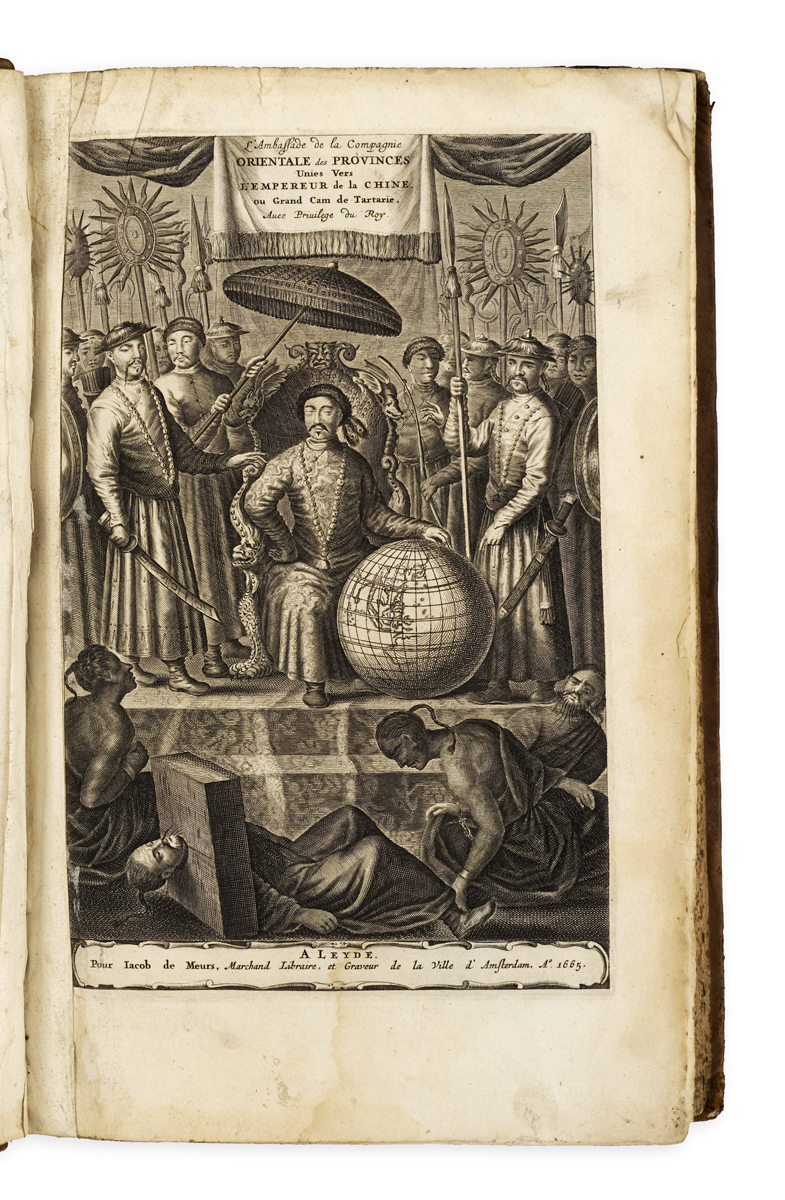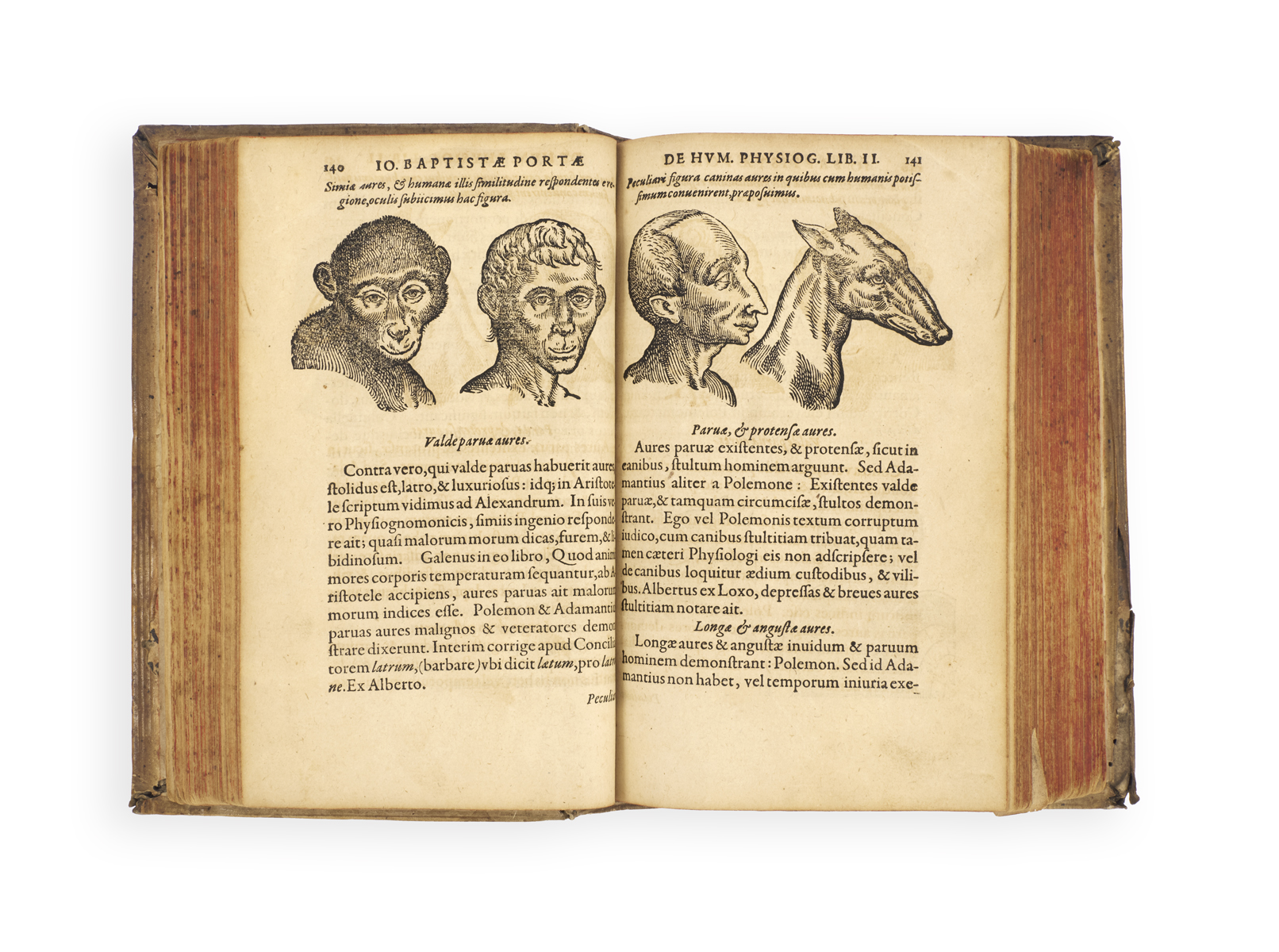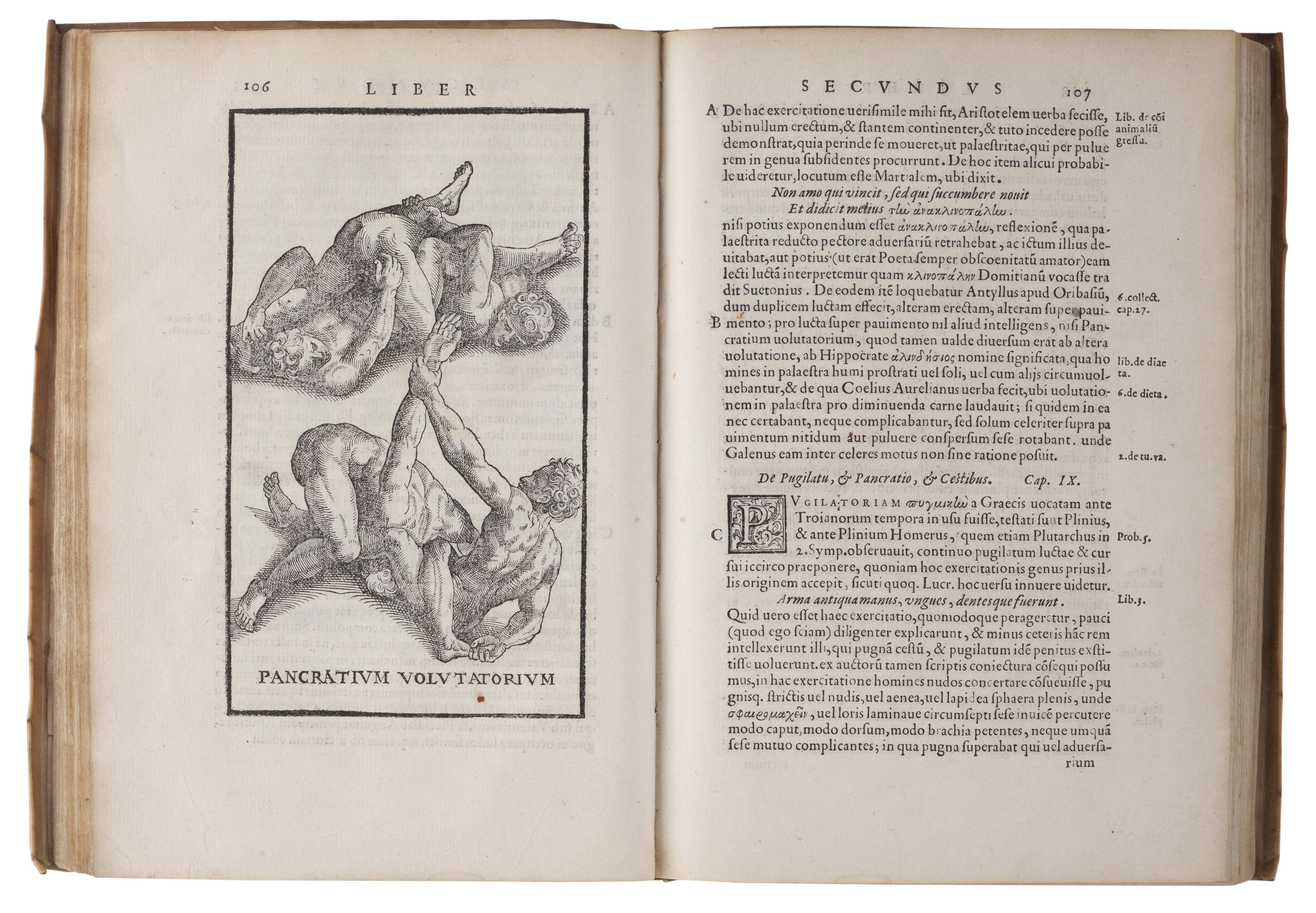

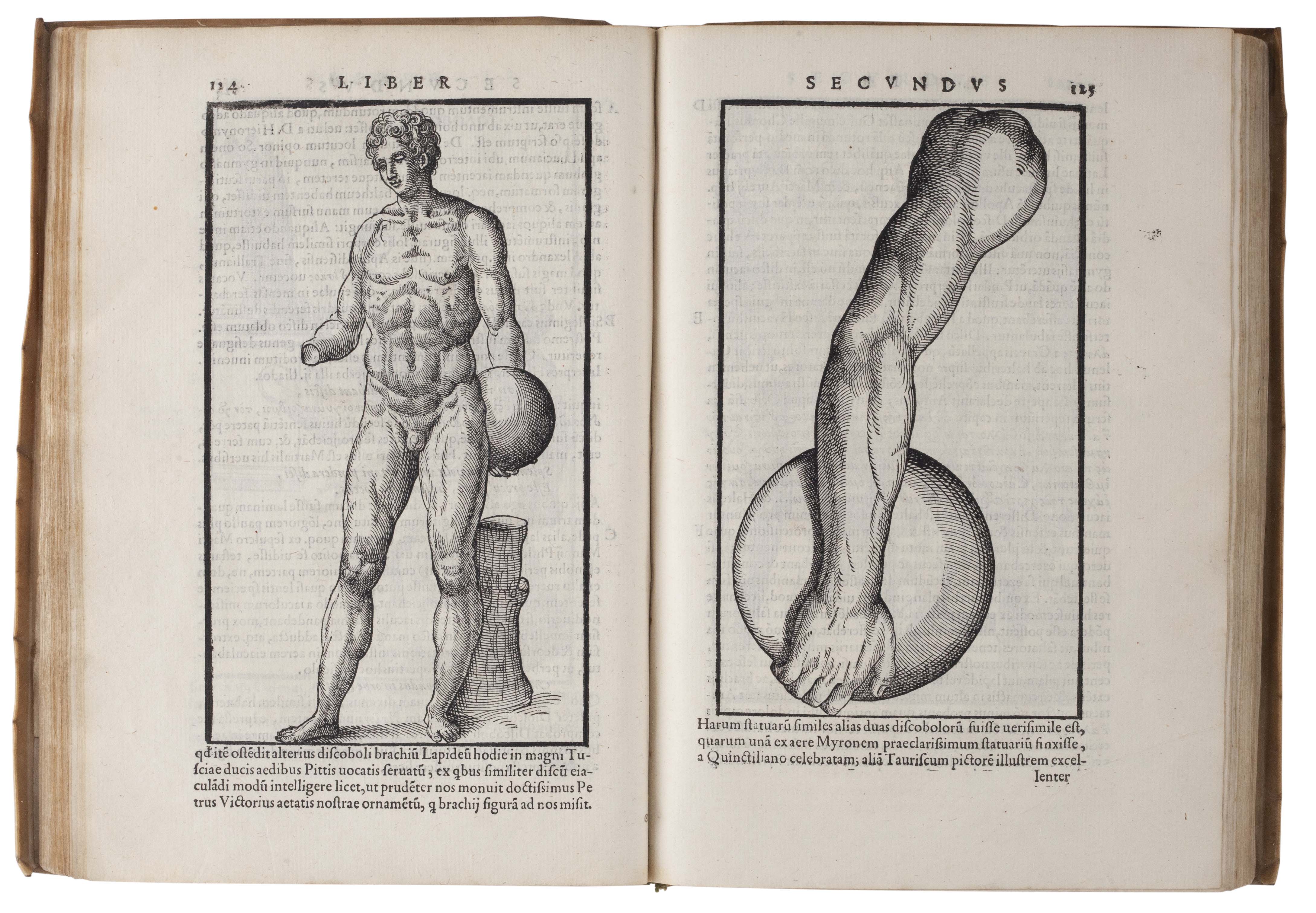
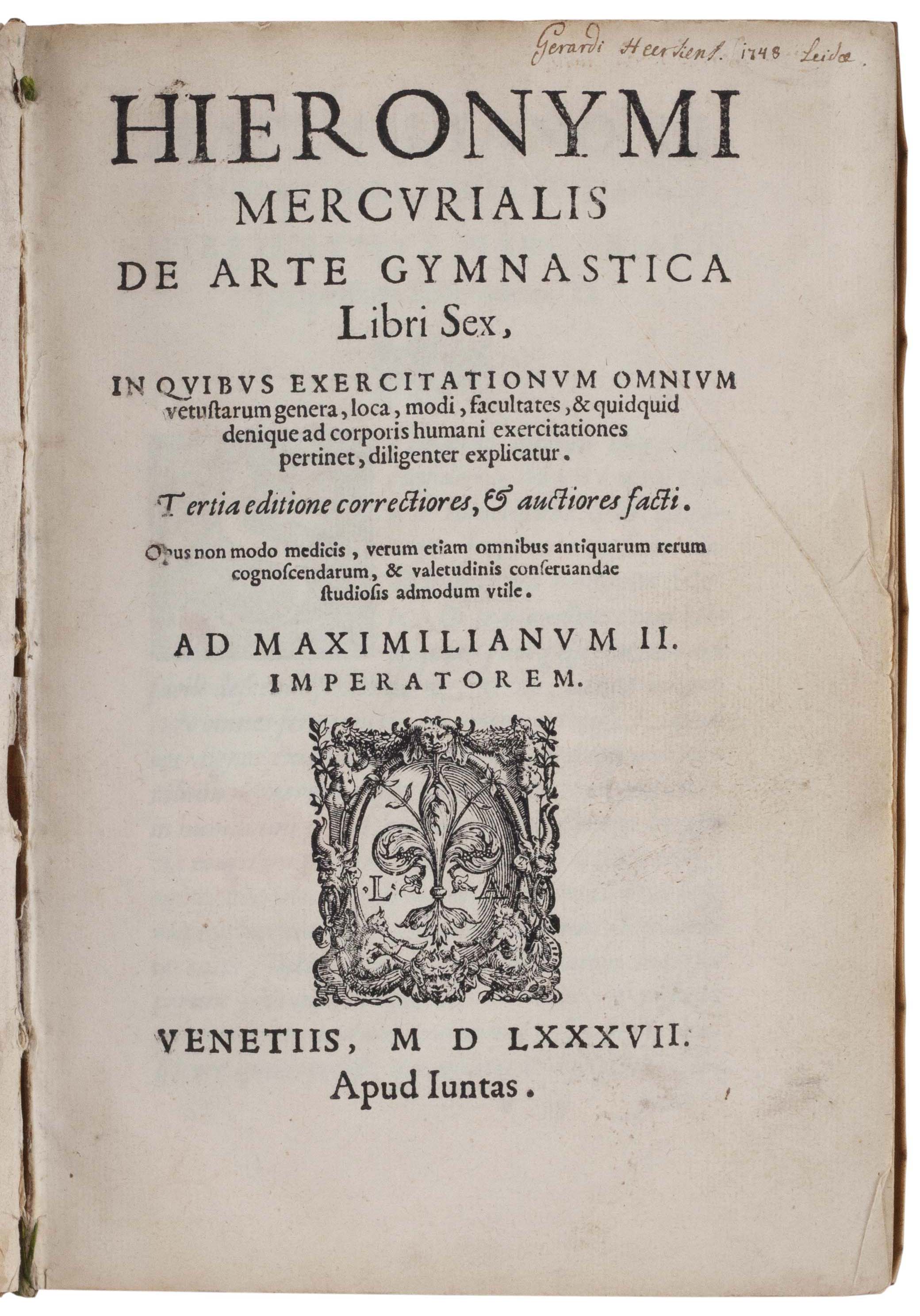

MERCURIALE, Girolamo.
De arte gymnastica libri sex, in quibus exercitationum omnium vetustarum genera, loca, modi, facultates, & quidquid denique ad corporis humani exercitationes pertinet.
Venice, [Lucantonio II] Giunta, 1587.
4to, pp. [12], ‘308’ [recte 312], [26], [2 (blank)]; woodcut printer’s device to title and colophon, woodcut initials throughout, numerous woodcut illustrations, of which many full-page; an excellent, bright copy in contemporary Dutch limp vellum, yapp edges, manuscript lettering in ink to spine; ink ownership inscription of Gerard Heersiens, dated 1748, to title, earlier ownership inscription very carefully erased from title.

Added to your basket:
De arte gymnastica libri sex, in quibus exercitationum omnium vetustarum genera, loca, modi, facultates, & quidquid denique ad corporis humani exercitationes pertinet.
Third edition of ‘the first illustrated book on gymnastics’ (Morton). A physician occupying senior posts in the medical faculties of Padua, Bologna, Rome, and Pisa, Girolamo Mercuriale (1530–1606) draws heavily on accounts of ancient exercise to argue for its medical benefits, being the first to study the effects of specific physical activities on different ailments, prescribing the correct methods, frequencies, and durations of exercises.
‘The first book on exercise and health and an important source for the study of gymnastics among the ancients’ (Norman), De arte gymnastica was first published in 1569, reappearing in 1573 with the woodcut illustrations by Cristoforo Coriolano used here and in subsequent editions until the late seventeenth century; it ‘was the first complete text on gymnastics and stresses the importance that all forms of exercise have in maintaining good health. Relying heavily on ancient practices, this work is an excellent compendium of the physical therapy of earlier times. Mercuriale describes ancient gymnasia and baths and discusses mild exercises such as dancing as well as more strenuous pursuits such as wrestling and boxing. He also gives full consideration to the health benefits of proper exercise and concludes with a section of therapeutic exercises. The book contains many excellent woodblock illustrations of wrestling, boxing, and other sports’ (Heirs of Hippocrates).
EDIT16 28045; USTC 842192; Wellcome 4226; cf. Mortimer 302; cf. Morton 1986.1; cf. Norman 1495; see Eimas, Heirs of Hippocrates (1990).
